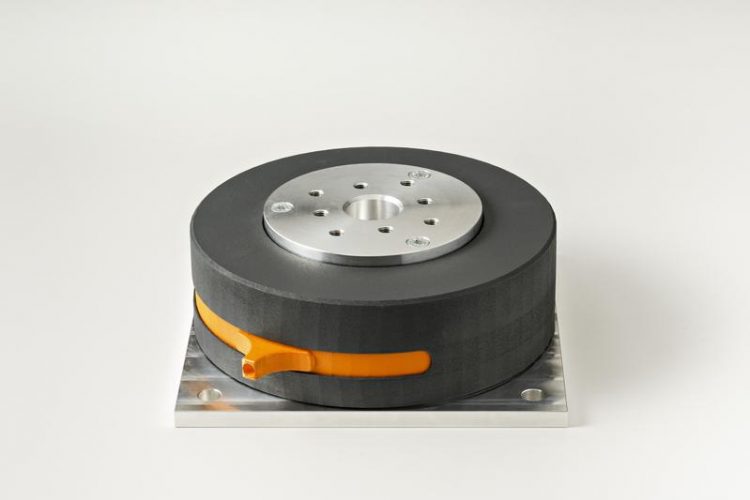New test rig components for faster development and validation

Prototype of a mount with tunable stiffness. Photo: Fraunhofer LBF/Raapke
What is the optimal combination of real and virtual world? The research team from Darmstadt developed tunable components and a mechanical hardware-in-the-loop interface.
Tunable components allow continuous adjustment of mechanical characteristics. For example, mounts with tunable stiffness enable testing of a test specimen under different boundary conditions or the implementation of tunable vibration absorbers.
If tunable rubber mounts are used as a development tool, with stiffness and damping adjustable independently of each other, it is possible to forgo the first bearing prototypes. This makes it possible to provide the mount manufacturer with optimized specifications at an early stage of development.
Mechanical hardware-in-the-loop interfaces can be used to simulate more complex boundary conditions in experiments, especially in the field of NVH development. The interface behaves equivalent to a underlying numerical model in a wide frequency range.
For example, an adaptive shock absorber can be tested for different combinations of top mount and chassis without carring out any modifications to the testing bench.
»The transfer of numerical simulation methods into the physical world of testing makes it possible for development processes to be drastically accelerated and costs to be reduced. Furthermore, our technologies and test rig components offer new possibilities for validation of numerical simulation models. Models can be validated for different operating points with less effort«, says Jan Hansmann, research associate and project manager at the Fraunhofer LBF.
Next, the research team from Darmstadt wants to work on the series-production implementation, which requires close cooperation with industrial partners.
Jan Hansmann, jan.hansmann@lbf.fraunhofer.de
http://www.lbf-jahresbericht.de/en/services/project-overview/vibration-technolog… Fuzzy control systems, Pareto optimization, genetic algorithms
http://www.lbf-jahresbericht.de/en/services/project-overview/reliability/structu… hardware-in-the-loop testing environment
Media Contact
All latest news from the category: Power and Electrical Engineering
This topic covers issues related to energy generation, conversion, transportation and consumption and how the industry is addressing the challenge of energy efficiency in general.
innovations-report provides in-depth and informative reports and articles on subjects ranging from wind energy, fuel cell technology, solar energy, geothermal energy, petroleum, gas, nuclear engineering, alternative energy and energy efficiency to fusion, hydrogen and superconductor technologies.
Newest articles

First-of-its-kind study uses remote sensing to monitor plastic debris in rivers and lakes
Remote sensing creates a cost-effective solution to monitoring plastic pollution. A first-of-its-kind study from researchers at the University of Minnesota Twin Cities shows how remote sensing can help monitor and…

Laser-based artificial neuron mimics nerve cell functions at lightning speed
With a processing speed a billion times faster than nature, chip-based laser neuron could help advance AI tasks such as pattern recognition and sequence prediction. Researchers have developed a laser-based…

Optimising the processing of plastic waste
Just one look in the yellow bin reveals a colourful jumble of different types of plastic. However, the purer and more uniform plastic waste is, the easier it is to…



